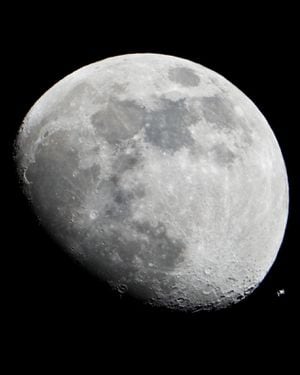Shropshire Sky At Night – January
In the world of astronomy, 2019 heralded a wide range of exciting firsts, including the first image of a black hole released in April. It took years of planning and coordination between the most advanced radio telescopes in the world.

As the Hubble space telescope is due to be eventually replaced by the James Webb Space Telescope, NASA has also announced two new exciting projects. Two rover missions are to be launched, one to land on the moon in 2022 while the other should be somewhere near Saturn's moon, Titan, in 2034.
Talking of moons, there were three attempts to land on our closest natural neighbour in 2019. China made the first and only successful landing, while rovers launched by Israel and India succumbed to mechanical and software failures.
Maybe you have just become the owner of a shiny new telescope, and looking forward to discovering many amazing things in the night sky, although most of them are so far and faint that just locating and detecting them can be a challenge.
The Moon is one celestial object that never fails to impress in even the most humble telescope. It’s our nearest neighbour in space – big, bright, starkly bleak, and just a quarter million miles away. An amateur telescope and a good Moon map can keep you busy forever.
Now, as the winter solstice is behind us, is the time to venture outside as we head towards the dark depths of winter. Just after 7pm in the middle of the month we find the constellation of Cancer rising in the east, while simultaneously Aquarius sets in the west. These are the extremes of the visible January ecliptic, which is an imaginary line in the sky that marks the annual path of the sun.
It gets its name due to the fact that eclipses, both solar and lunar, can only occur along this path. It is also the line along which the Moon, planets and asteroids can spotted, as well as the origins of the familiar Zodiac constellations.
With clear skies you should be able to identify the constellations of Gemini, Taurus, Aries and Pisces, each one associated with a myth or legend from ancient Greek. The more adventurous astronomer may be interested in exploring the constellations of Orion, Perseus and Pegasus, as they contain a wider variety of spectacular objects.
For the first week of the January the international space station has been be visible in the couple of hours before dawn. The unmistakable bright object orbits the earth every 90 minutes, giving you two chances to spot it, although only visible for a few minutes as it reflects the sun. If you are not an early morning person you will have to wait until the latter part of the month when it will be visible around tea time. Exact details can be found from a variety of popular astronomical websites.
The Shropshire Astronomical Society, which meets monthly on the second Saturday at Little Ness Village Hall and on the third Saturday at Rodington Village Hall, has host a wide range of observing events, and always welcomes experienced or novice stargazers. For further information visit www.shrophire-astro.uk
Steve Szwajkun is a member of Shropshire Astronomical Society.





